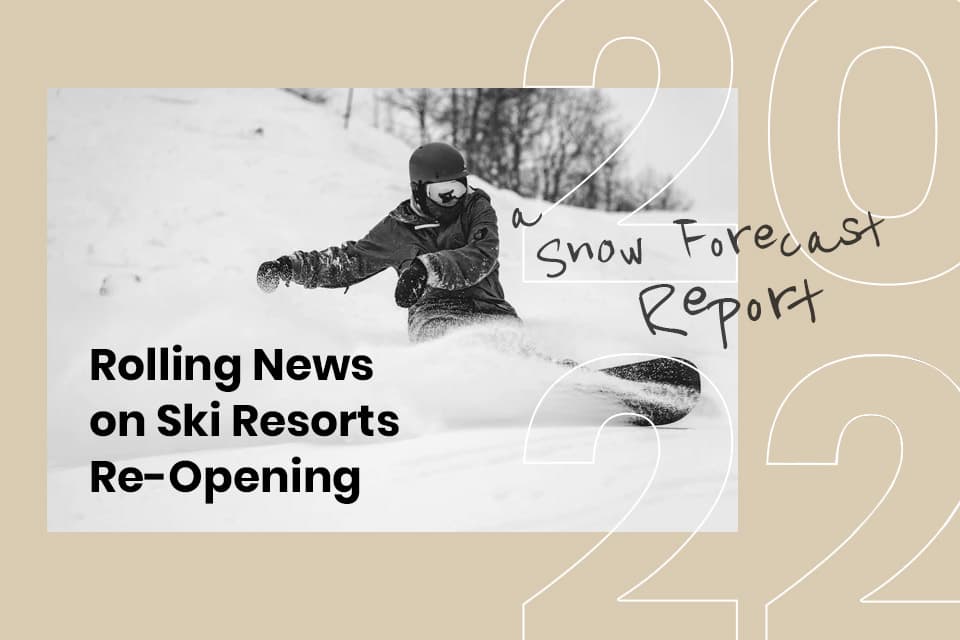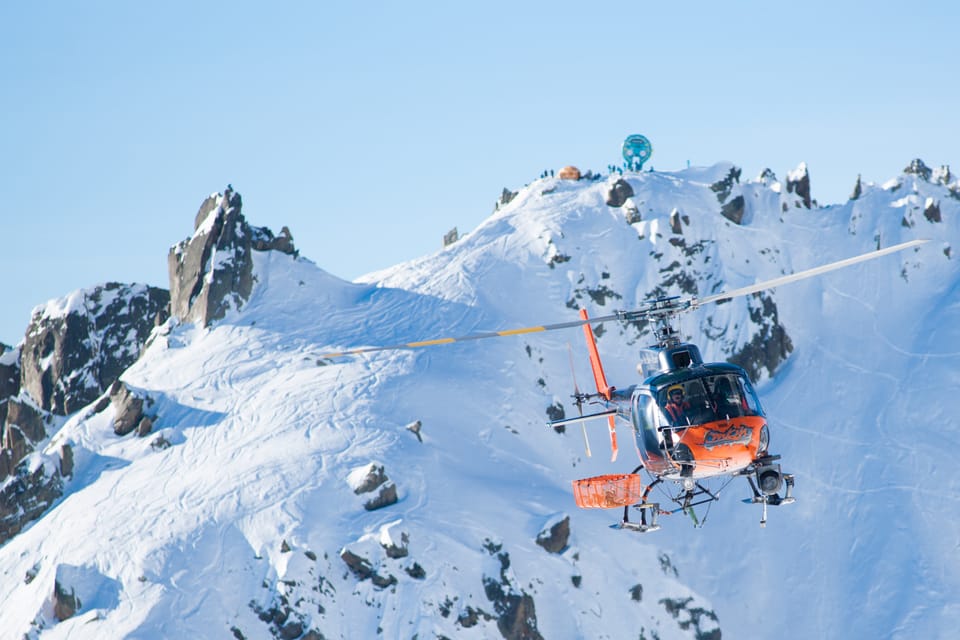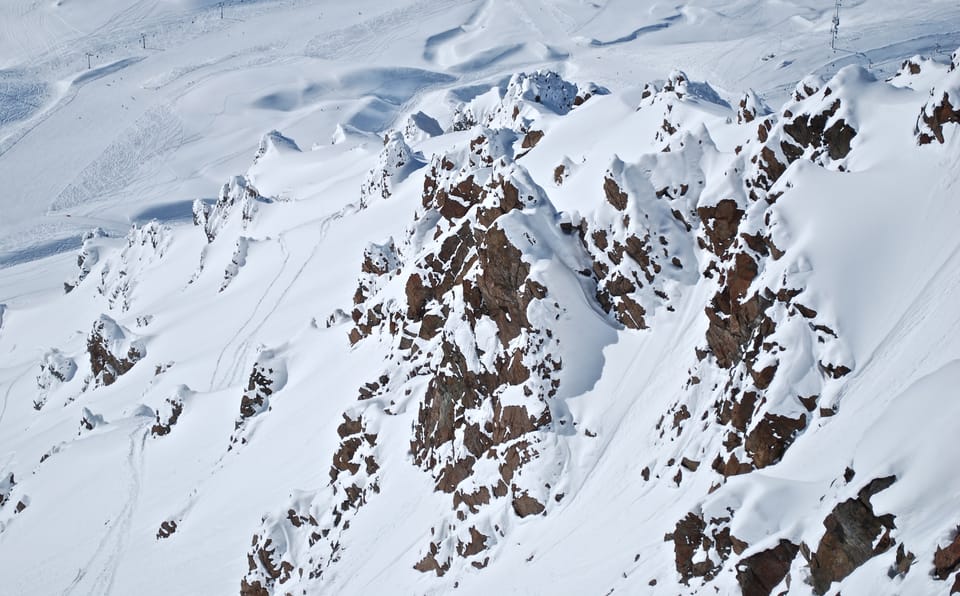WORLD SNOW ROUNDUP #255

Issued: 31st August 2022
By Patrick “Snowhunter” Thorne
World Overview
Springtime, by the meteorological measure of the seasons, kicks off on Thursday in the Southern Hemisphere, which also marks the start of autumn or fall (depending on which continent you’re reading this). The changing of the seasons always seems to be reflected in ski area operations. Sure enough, we are, as you’d expect, generally seeing fewer freezing nights and warmer afternoons on the south side of the Equator, where most ski areas will end their 2022 seasons in the latter half of this month. Snow depth stats growth also seems to have stopped and even gone into reverse for some areas. North of the Equator it’s not quite as hot as it has been and we’re seeing more unsettled weather and reports of early snowfalls up high.
Another mark of the season change is the first ski areas in the Southern Hemisphere to end their 2022 season. This had been expected to be Afriski in Lesotho, due to close this Thursday, September 1st, as scheduled, but it’s been beaten, unhappily, by Mt Lyford in New Zealand which announced it was closing early, last Friday, due to warm, wet weather in New Zealand. One of Chile’s ski areas has also closed, the first in the Andes for 2022. Afriski closings means we’ll be down to three continents with ski areas operations in September: South America, Europe and Australasia/Oceania. That’s a drop from six in July.
For most ski areas in the Southern Hemisphere, the springlike conditions are pretty much as normal and welcome. For New Zealand though, with Mt Lyford the most extreme case, it has been too warm (and wet at times) causing operational issues in most areas, particularly marked on the country’s North Island where the largest resort Mt Ruapehu continues to struggle to open many lifts and runs. Australia has also seen some rain this week as temperatures warmed up there before snowfall returned.
Not snow news per se, but also worth a mention this week is that powder-snow haven Japan, which closed its borders to international leisure travellers more than two and a half years ago (although has reopened to people arriving on pre-booked group tours in the past few months) has announced that restrictions are being further eased in September to allow people from selected countries including most of the world’s leading economies, to arrive without needing to be in a group tour (eg independently) and without needing to have a negative PCR test within 72 hours of travel. Although evidence of triple vaccination will still be required.
It has been a quieter week for snowfall over the past seven days for much of the Southern Hemisphere. Some light showers have been reported but the dominant weather in the Andes and Australia (after some rain on Monday in the latter case) has been sunnier and springlike with many areas likely to end their seasons over the next two to four weeks. New Zealand’s ski season continues to be more problematic, unfortunately, with the first closure-for-the-season of a smaller centre announced due to warm, wet weather. The same issue has impacted the country’s biggest resort which has very little terrain open and has just been forced to lay off a third of its workforce. Finally, Lesotho’s Afriski, the only ski centre currently open on the only continent with ski areas in both the Southern and Northern Hemispheres, says it will end its 22 season this Thursday, September 1st.
AUSTRALIA REPORT
It’s been a quieter week for Australia’s ski areas after all the snowfall of the previous fortnight. Unfortunately, a front moving in from the west brought unwelcome rain on Monday, although the impact was not so much as the big storm in mid-August and things turned snowier more quickly. Otherwise, there have been more light showers but the overall picture has been of clearing skies and a move towards more springlike conditions. The two New South Wales resorts of Thredbo (85/146cm / 34/57”) and Perisher (90cm/146cm / 36/58”) are both posting marginally the deepest snow cover, although Perisher has marginally more terrain available thanks to, well, being the biggest. There are 65km (41 miles) of slopes open there (100% of terrain) and the entire fleet of almost 50 lifts turning. Ski areas have continued to hit capacity with Falls Creek (100/143cm / 49/57”) warning at the start of the week that it was already fully booked last weekend.
AUSTRALIA FORECAST
Following the rain and snow at the start of this week it has been predominantly dry with a mixture of sunshine and cloud and that’s set to continue through the rest of the week. Temperatures will range from overnight lows towards minus eight Celsius and daytime highs of plus eight Celsius so more springtime freeze-thaw conditions across the country’s snowfields.
NEW ZEALAND REPORT
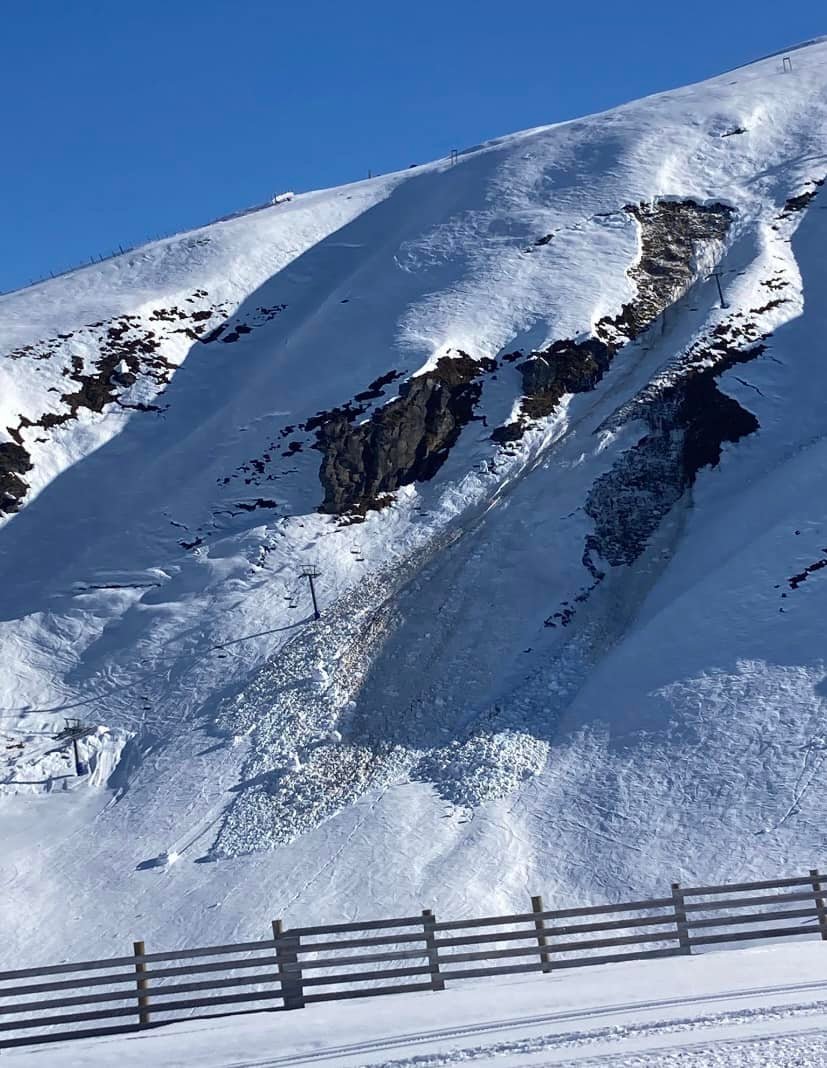
These are frustrating times for New Zealand’s ski centres. Just as winter really seemed to be in full swing in mid-August a major warm-wet storm damaged snow cover and while things have turned colder again at times since it has mostly been warmer than ideal. For some areas, this has resulted in high avalanche danger with huge slabs of heavy snow potentially ready to come down. For others, it has forced them to end their 2022 seasons much earlier than they’d hoped. It’s important to note though that although “spring has come early” most of the major centres have most of their terrain still open. The past few days have seen colder temperatures and better conditions too. Mt. Hutt (110/154cm / 44/61”) still has one of the biggest areas open in the country, 40km (25 miles) of slopes, as well as one of the deepest snowpacks. Treble Cone (110/200cm / 44/80”) is now posting the country’s deepest base but has about half of their terrain closed due to the avalanche danger.
Things remain bad at Mt Ruapehu, unfortunately, with the resort announcing it was having to “let go” about a third of its 400+ workforce on Monday this week, with only limited terrain open at Whakapapa and Turoa was completely closed due to the warm, sometimes wet weather. Things have been improving in recent days, however, and after a Herculean effort by staff, Turoa re-opened the High Noon Express and limited terrain on Wednesday. Trying to send a positive note resort management stressed that as they usually stay open to late October or even November, frequently being the last in the Southern Hemisphere still open. Their 2022 season is only at its halfway point and late season snowfall could re-establish their reputation as the spring skiing capital of the Southern Hemisphere…if it arrives in time and in abundance.
NEW ZEALAND FORECAST
New Zealand is currently seeing one of its most positive looking forecasts in weeks, particularly for the South Island, with heavy snowfall and subzero temperatures forecast, day and night, going into the weekend. Temps could drop as low as double-digits subzero for the first few nights of springtime.
ARGENTINA REPORT
It has been another mostly dry week with plenty of sunshine and the odd cloudy spell for most Argentinian ski areas. Temperatures have been hitting double digits above freezing in the daytime but still dropping a degree or two below freezing at night. All in all, a spring skiing freeze-thaw vibe and an end-of-season feel. Indeed most of the country’s ski centres are set to close over the next three weekends, although the majority should make it to the latter half of September. South America’s largest centre, Catedral near Bariloche (30/120cm / 12/48”) continues to post the most terrain open in the world at present with some 90km (56 miles) of slopes and Caviahue (250/300 cm / 100/120″), the deepest snow base in the country and second deepest in the world. Actually, it’s the deepest at resort base level anywhere too.
ARGENTINA FORECAST
Staying mostly dry except at more southerly areas with Las Lenas (50/110cm / 20/44”) and the world’s most southerly major ski centre at Cerro Castor (70/150cm / 28/60”) set to see a return to below-freezing temperatures day and night and light to moderate snow showers through the latter half of this week.
CHILE REPORT
There has been a definite spring skiing vibe in Chile over the past week with plenty of sunshine and warming temperatures. The predominantly sunny week has seen temperatures for most Chilean ski areas into the -5 to +5C range through the 24-hour cycle on higher slopes, freezing up to +10C down at resort bases. Lagunillas (10/50cm / 4/20”) hadn’t named a closing day until Sunday rolled around but had kept posting images of heavy, wet snow thawing on its slopes with warnings that closing day was “soon”. It reported only about a third of its slopes remain open and then on Sunday evening announced that was it and “See you in 2023”. At the other extreme Nevados de Chillán (80/350cm / 32/140”) continues to post the deepest base in the world at present and is fully open, staging international ski competitions at the weekend. Most ski areas in Chile do close in the latter half of September most seasons but not all. Portillo (103/119cm / 41/48”), currently fully open, plans to stay open to the start of October for example.
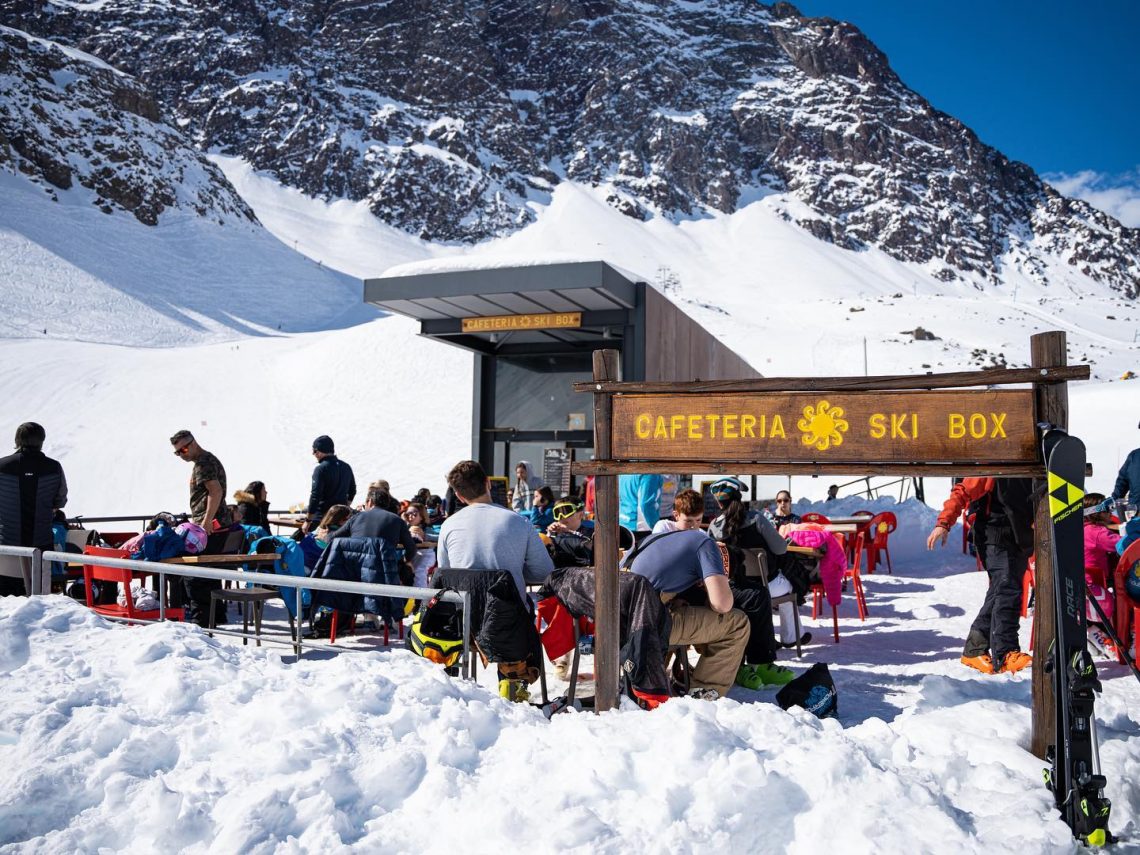
CHILE FORECAST
Full-on sunshine is forecast for the week ahead and daytime highs in the mid-teens above freezing mean very springlike conditions that may be increasingly season-ending. Overnight lows still dropping below freezing though for freeze-thaw conditions.
AFRICA REPORT
The end of the 2022 ski season is here in southern Africa with Afriski (10/30cm / 4/12”), in Lesotho, announcing its final day this year will be this Thursday, 1st September. The past week saw more snowfall reported in parts of the region at the end of last week but rising daytime temperatures and overnight lows no longer reliably drop below freezing every night. Afriski ran a Winter Music Festival to celebrate its final weekend.
AFRICA FORECAST
The snow looks likely to thaw fairly fast over the week ahead with more sunshine and daytime highs reaching +15C as spring arrives in southern Africa.
The start of September marks quite a crucial month in the Alps. Until very recently around a dozen ski areas in the big four alpine nations would aim to open their highest glacier slopes to kick off the new season. This year, with the month starting with virtually no snow lying on glaciers, that would have been unlikely as it is. But in most cases dates have not been specified or are still 3-4 weeks away at the end of the month for the few that have tentatively named a target opening date. The Pitztal glacier is aiming for September 24, and Solden for September 30. There are, of course, ski areas including Italy’s Cervinia and Passo Stelvio as well as Saas fee and Zermatt, in Switzerland, that would like to be open now but are temporarily closed while they await colder, snowier weather up high.
Les 2 Alpes, meanwhile, forced to end its summer ski season early back in July, has announced it is joining Solden and Zermatt in staging World Cup races in late October, in its case FIS Skiercross and Boardercross competitions. All three centres will be hoping for a good dump of fresh snowfall in the next six weeks.
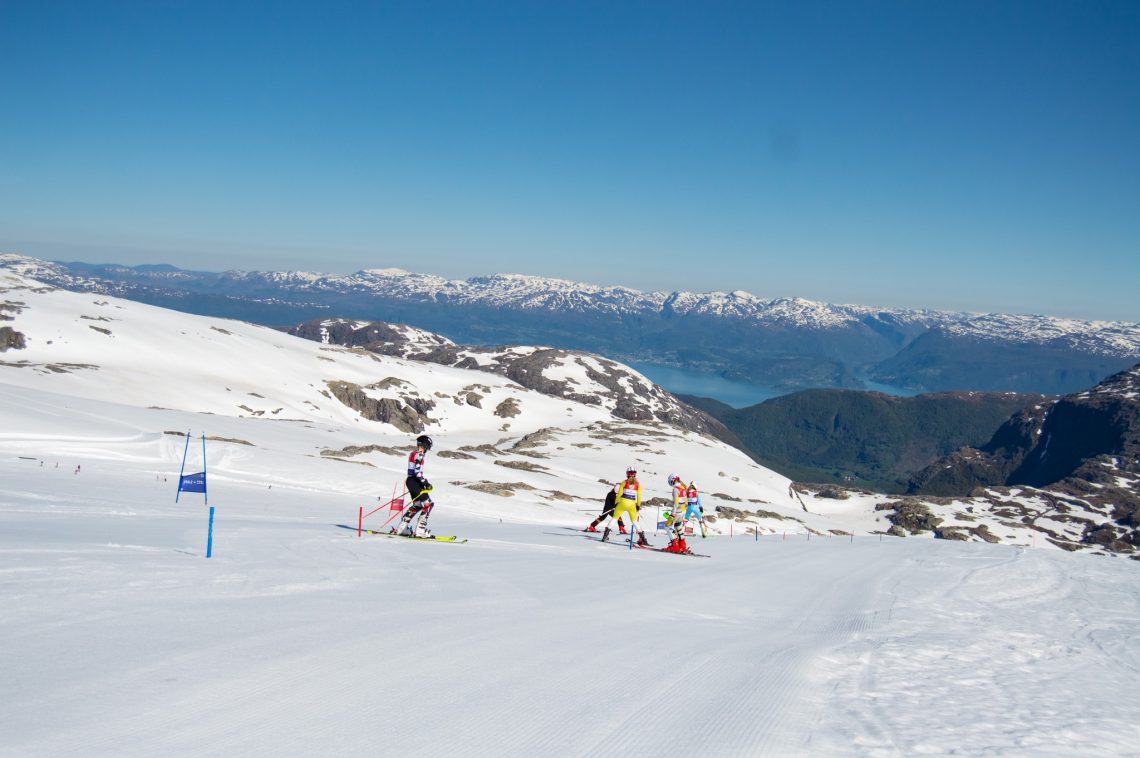
Up in Scandinavia, the Fonna and Galdhopiggen glaciers remain open only to race teams booked in for training. Fonna usually ends its season in September but Galdhopiggen aims to stay open to late October/early November and says it’ll re-open to the skiing public when conditions improve.
ALPS REPORT
We’ve made it to September with, unfortunately, still rather high temperatures dominating in the Alps as they have the past six months. Temperatures on glaciers are dipping below freezing overnight but still reaching +5C in the daytime. There have been some very light dustings of snow reported and there does seem to be a seasonal change beginning. Verbier noted a snow dusting on their Tortin glacier at the end of last week, but these are nervous times for ski areas planning to open for 22-23 season skiing in September or October, a real temperature change and a big dump of snowfall is badly needed.
For now, though year-round Hintertux (0/25cm / 0/10”) remains the only area still open to the public with its self-declared “extremely icy” 6km (3.5 miles) of slopes kept open by snowmaking.
Switzerland’s Saas Fee and Zermatt and Italy’s Passo Stelvio would all like to reopen as soon as conditions improve. In the meantime, Saas Fee continues to operate for race team training.
ALPS FORECAST
There’s more hope of some snowfall up high as we start September but its marginal. Temperatures at 3000m will be close to freezing overnight but reach +5 or +6C during the daytime. Precipitation may fall as rain or snow therefore.
SCANDINAVIA REPORT
The Fonna and Galdhopiggen (0/50cm / 0/20”) glacier ski areas in Norway remain open only to race team training, not to the public, both citing lack of terrain available. Galfhopiggen (but not Fonna) say they do plan to reopen to all once conditions improve. Things are looking quite promising as well. There’s been lots of sunshine but daytime highs at the base of slopes have been down to the high single figures Celsius and overnight lows a degree or two below freezing down to the base of the slopes. Meanwhile, the Finnish ski areas of Levi and Ruka celebrated 40 days until the start of their 22-23 seasons on Sunday. The two use snow farming to open some slopes in early October each year, now just over five weeks away!
SCANDINAVIA FORECAST
More sunshine for the rest of this week and then the chance of snowfall at the weekend as a front moves in with temperatures looking to stay fairly low.
NORTH AMERICA INTRO
There was more snowfall at high elevations in Colorado over the past week, further raising anticipation for the week ahead. The Tetons to the north also saw a dusting of snow up high, their first of the pre-season. Back in Colorado, Arapahoe Basin, likely to be one of the first to open in North America in less than two months if conditions are favourable in October, posted images of snow patches on high ground and the former ski area of Berthoud Pass near Winter Park also reported snow cover. More resorts have been issuing tentative opening date plans with Keystone, in Colorado, positioning itself as ready to open as early as conditions allow in October. Along with A-Basin, Wolf Creek and Loveland also open in October when they can. In California, Mt Rose has set the earliest specific date known so far, November 3rd, while Mammoth Mountain is targeting November 11th and Heavenly a week later on the 18th. The largest ski area in the US, Park City in Utah, will also open on the 18th all being well.
Up in Canada, at Whistler Blackcomb (the continent’s largest ski area) it’s a fortnight later on November 24th. Currently though, and until the first centre does open in the fall, the only place in North America where you can officially ride a chairlift up a slope with your skis or board on in the Big Snow indoor snow hall in New Jersey.
NORTH AMERICA FORECAST
It will continue to be largely sunny across much of North America but a little cooler than it has been. Overnight lows getting within a few degrees of freezing up high.

